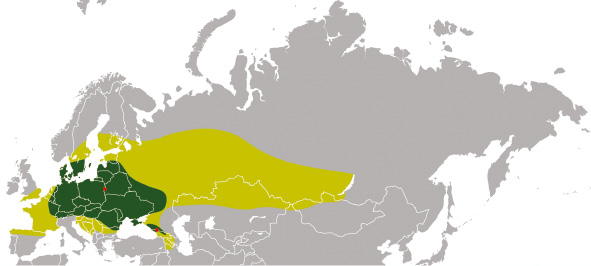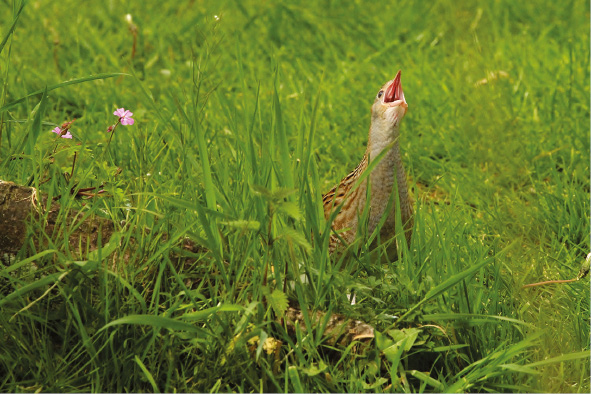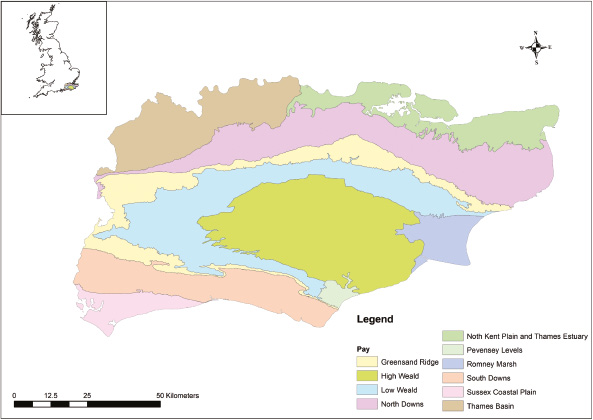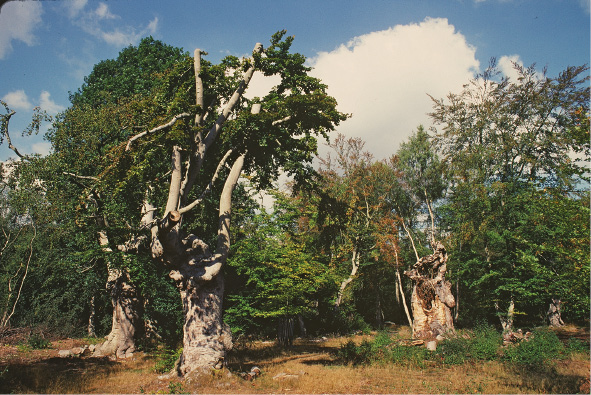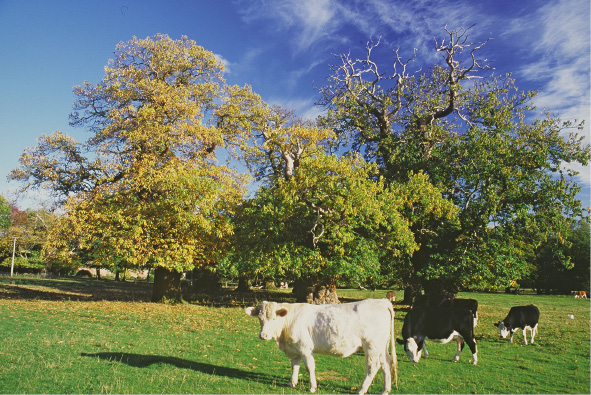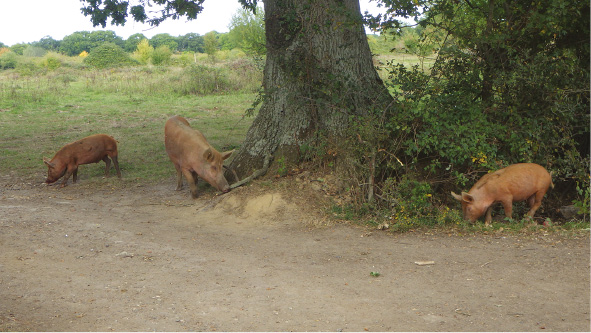Introduction
Those of us who work in heritage have much to contribute to debates about how we shape our altering world. Archaeologists are blessed with a profound appreciation of time depth and the changes that have occurred over the millennia in forming the environment that surrounds us. We are uniquely placed to help contextualise some of the most important issues that confront humanity, from climate change to nature recovery and from inequality to food production. Through the medium of archaeological and palaeoecological studies, heritage professionals have been able to chart the sometimes dramatic processes that have altered Britain’s landscape and in turn its associated plant and animal communities. From the tundra and megafauna of the Last Glacial Maximum to the major shifts in the Bronze Age hydroclimate that created our peat uplands and through to the present, archaeologists can tell the story of Britain’s countryside.
Challenges and opportunities
Despite these abilities, heritage professionals have been slow to respond to conservation initiatives such as rewilding. The concept of ‘rewilding’ (now often termed ‘wilding’) is a progressive approach to conservation that attempts to restore ecosystems and natural processes, often via the reintroduction of species. While restoring degraded landscapes is an essential element of such projects, rewilding is inconsistently defined. In its strictest sense it allows nature to take its course; however, that has not been without problems (for example, see Barkham 2018) and now most wilding projects require intervention, making them merely an extension of human interference in the landscape. Crucial to these schemes is the grazing of large herbivores, which act as habitat engineers and drivers of biodiversity. Archaeologists and palaeoenvironmentalists have much to offer such projects, by providing historical context and palaeoecological data, as well as an understanding of the processes that led to biodiversity loss.
This position is made clear in that the introduction of animals is often framed with a historical precedent in mind. Human impacts often appear as the causation of species loss, resulting in a poorer, nature-depleted landscape. Within the UK, European Beaver and Bison (Bison bonasus) are perhaps the flagship species cited as success stories of ‘reintroduction’. The stocking of a large fenced enclosure with a number of European Bison as part of the Wilder Blean project, near Canterbury, Kent, is an experiment to see how well the animals can act as natural ‘ecosystem engineers’. The initiative is often acclaimed in the media as the return of a species that has been missing from the UK’s landscape for thousands of years (for example, see Carrington 2020), despite a lack of evidence for their former presence.
Figure 1 shows the historic range of European Bison as it is currently understood. Light green represents the hypothetical range of the species in the Holocene, dark green shows the range of the bison in the late Middle Ages, while the areas in red include the range of the species in the twentieth century. No proven occurrences of European Bison for any period are currently known from Britain. The nearest faunal evidence recorded in an archaeological study by Norbert Benecke (2005) is early Holocene material from west Germany. Doggerbank is often cited as a location where remains of European Bison have been found (Vaughan 2022), although the present author can find no scholarly source for this information and the remains from Doggerbank appear to be Steppe Bison (Bison priscus).
So, are Bison bonasus a reintroduction or an introduction? Of course, absence of evidence cannot be taken as evidence of absence. It remains possible that future studies might show that Bison bonasus was present in Britain. At the moment, however, there is a very poor basis for framing the species as a reintroduction to the British landscape, something which engagement with informed heritage professionals could have mitigated at an early stage. This is not to say that the project does not have immense value and narratives now appear to have changed, but incorrect historical context detracts from an otherwise worthwhile endeavour (see Turk 2022 for updated narrative).
Farming and sustainability
Despite the fact that human interference has often had a negative impact on Britain’s natural world, not all human intervention has been so. It is often perceived that farming in particular has been detrimental to nature and biodiversity as well as the health of our countryside. Certainly, this appears to be the case with some post-industrial land use, where chemical fertilisers, pesticides and herbicides, together with mechanisation and monoculture, have led to ecological impacts and soil degradation. Over the last 200 years these factors, as well as irresponsible forms of fishing, hunting and predator control have perhaps had the greatest impact on Britain’s wildlife. Anthropogenic climate change is set to cause intense ecological upheavals now and in the future, just as natural cycles of climate change did during prehistory.
In contrast to much modern farming, pre-industrial agriculture was, in many ways, geared towards sustainability and relied on natural inputs focused on soil health and the carrying capacity of the land. While direct aping of early farming might not solve modern agricultural issues, studying past pastoral, arable or mixed regimes can inform future developments and take the best elements from past land use and apply them in suitable contexts. It must be remembered that certain species (for example, the Corncrake) thrive alongside traditional agricultural regimes (Tyler et al. 1998; see also Figure 2) and that sustainable farming is essential to humanity’s survival.
Historic landscapes as habitat
Moorlands, heathlands, wooded commons and sheep-cropped downland are all a product of human intervention. The British countryside is composed of distinctive cultural landscapes, which contribute to the beauty and diversity of the countryside while also providing a sense of place. These landscapes originated at different periods, and all have evolved over time. Nevertheless, their essential characteristics often owe their foundations to particular land uses and agricultural practices. Within South East England, the sheep-corn husbandry of the South Downs and the exploitation of the Weald as wood-pasture (the practice of seasonal livestock grazing in combination with wood production) left a legacy in the morphology and ecology of the landscape. These human-influenced variations are all around us and people, together with animals, have manipulated habitats within the countryside for millennia. This is the case across the country, whether that be the peat uplands of South West England, the heaths of Breckland in East Anglia or the dynamic mosaic Ffridd landscapes that exist at the lowland–upland interface in Wales. These historic landscapes accentuate certain environments that in turn encourage certain species. Consider heathland specialists such as the Dartford Warbler or one of Britain’s most endangered insects the ‘wart-biter’, itself reliant on chalky grassland and suitable grazing regimes.
Locations that are today a target for nature recovery are often inherited from fragments of historic land use that once characterised wider geographical areas. It is frequently the case that these fragments escaped the agricultural ‘improvers’ of the eighteenth and nineteenth centuries as their soils, topography and/or hydrology were perceived to be just too extreme to warrant investment. They could also be a legacy of elite hunting preserves or landed estates. Alternatively, they are sometimes inherited from landscapes where the history of communal farming was so strong that older forms of land use maintained an adequate defence against agricultural conversion, such as late post-medieval enclosure.
Habitats and cultural and historic landscapes thus evolved in tandem and it may be possible to suggest that enhancement or revival of the essential characteristics of a particular landscape holds the key to local nature recovery. Holistic and informed conservation measures where ecology is encouraged, studied and preserved alongside an understanding of the evolution of the historic environment can only be beneficial.
Medieval pastoralism: lessons for our landscape – a case study from South East England
The historic landscape of South East England’s largest culturally and environmentally distinctive area, the Weald (Figure 3), is a legacy of Anglo-Saxon wood-pasture. This environment was formed through usage as pasture for both pigs and cattle, and today the area retains important wood-pasture commons such as The Mens (from Old English gemǣnnes ‘common land’) (Mawer and Stenton 1930, 560; Smith 1956, 33) and the rejuvenated Ebernoe Common. These areas have been identified as among the most important places for nature conservation in Great Britain (NCR Garde 1) (Ratcliffe 1977, 48–9) and now comprise nature reserves belonging to the Sussex Wildlife Trust. Medieval transhumance, the movement of people and livestock to seasonal grazing grounds, was key to their formation as well as much of the historic landscape of the surrounding Weald (Hooke 1989, 2013). Transhumance was a historically attested practice that, in many parts of Britain and Europe, underpinned the seasonal use of different habitats (Costello and Svensson 2018; Comeau and Seaman 2019; Dixon and Theune 2021).
ASE’s research into medieval pastoralism involved collaboration with the Sussex Wildlife Trust by way of a seminar. This was designed to provide a context to historic grazing regimes within South East England and demonstrate how they have shaped the landscapes of regions of a particular character. The seminar’s objectives aimed to address three key questions:
How were historic landscapes formed through medieval pastoralism?
How did historic grazing regimes work, and what were their similarities with modern conservation grazing, regenerative farming and rewilding projects?
How can nature recovery be aided by restoration and enhancement of the historic landscape?
The seminar followed on from a series of publications by the present author that have investigated aspects of medieval pastoralism (Margetts 2017, 2021a, 2021b, 2022). To date, these studies have focused on cattle and pigs within the Weald, but there are plans afoot to investigate sheep-corn husbandry of the South Downs and both transhumant and specialised livestock husbandry in Wales.
Cattle and wood-pasture
Investigation of medieval cattle husbandry by the author suggests that animals’ beneficial role for ecology and habitat regeneration hold potential value for conservation graziers and husbandmen. Extensive pasture as well as access to fodder for overwintering was key to effective medieval cattle husbandry. Pasture and fodder for cattle does not need to be of the highest quality. Browse (fodder provided by leaves and twigs) could make up a significant part of the animal’s diet, something capitalised upon by the Wealden farmer by the grazing of hedges and shaws, a type of small wood or copse. On average, modern cattle breeds pastured in woodland can consume between approximately 6 and 8 kgs of foraged browse per day (Forestry Commission Scotland 2018) and it is probable that unimproved medieval stock could make even more use of this poor-quality feed.
Pollard hay, the cutting of trees in leaf for feeding stock, may have also constituted an important fodder crop, cut to feed cattle over the winter months. This method of husbandry, as well as the importance of browse, draws a clear link between cattle and wood-pasture environments, the seasonal access to which may have been beneficial in relation to purely grassland pasture. As a ruminant, cows are able to extract more nutrition from lesser quality feeds. Access to browse and a more natural diet can also lead to healthier cows. Consumption of twigs and leaves has potential medicinal effects on cattle, although, apart from the benefits of willow, evidence is scarce; the area still requires in-depth research and study (Peter Aspin, personal communication). Despite a dearth of scientific evidence, the health benefits of browsing to cattle can possibly be traced in the reproduction rate and general health of the free grazing longhorn herd of the Knepp estate in the Sussex Weald. This rewilding project has yielded statistics for both factors that are better than most conventional farms (Tree 2019, 103).
Though less nutritious than marsh, meadow or grassland, there was a great deal of wood-pasture in South East England, largely in the great expanse of the Weald and the wooded parts of the downland. That the Weald in particular was a significant cattle raising area (Margetts 2021a) has particular relevance to our understanding and future management of landscape. The South East’s wooded core is particularly suited to the husbandry of cattle as opposed to other livestock types, and encouraged early cattle husbandry.
Such habitats are increasingly becoming targets for restoration, with both management and the creation of wood-pasture featuring as part of the government’s new Environmental Land Management scheme (Figure 4) (Department for Environment, Food & Rural Affairs and Rural Payments Agency 2021). An appreciation of the historical context of wood-pasture management can only be beneficial for conservation and regenerative agriculture projects.
There are a number of conservation reasons for keeping cattle in woodlands. These include benefits to biodiversity by reducing tree and scrub regeneration, maintaining open habitats and by decreasing dominant plant species (Armstrong et al. 2003, 26−7). How these management assets are best employed are, however, dependent on the aims of the particular project or the degree to which a holistic integrated approach is employed.
Though the benefits of tree-cover are being increasingly realised (Woodland Trust 2015) there are a number of aspects of medieval practice that should be considered in the light of current approaches to landscape management and conservation. Trees can regenerate within cattle grazed woodlands, although the degree of regeneration declines as grazing pressure increases (Armstrong et al. 2003, 27). Advice for conservation managers who wish to encourage a range of ancient and semi-natural woodland types has therefore encouraged lower stocking densities (usually around 0.5 livestock units per hectare; Mayle 1999; Woodland Trust 2012; Scottish Forestry 2018). This was managed by medieval farmers by way of stints (the numerical limitation of grazing rights), small herd sizes and restrictions on the month and length of grazing (Winchester and Straughton 2010). For restoration of lowland wood-pasture and maintenance of parkland environments, however, a higher grazing intensity is usually recommended (Mayle 1999; see also Figure 5).
The grazing of enclosed spaces was a particular feature of the medieval period in South East England. It is important to consider the varying environments that would have existed within ring-fenced areas, including seasonally grazed denns (livestock pastures especially for swine) and the more heavily cropped vaccaries (specialised cattle farms) and deer parks of the early and later medieval periods (see Margetts 2021a).
Palaeoenvironmental studies are key to future understandings of medieval habitats and could provide templates for considering the aims of conservation and restoration initiatives. A case study is provided by the results of the palynological work at the Hayworth enclosure, West Sussex. Here, from the seventh century an enclosed seasonal pasture was gradually cleared of woodland until, by the eleventh century, a wood-pasture type environment had formed in which beech with oak had become the co-dominant woodland species. By the onset of the twelfth and thirteenth centuries, the presence of grassland and cereal pollen suggests a move to a more open, cultivated landscape concurrent with the enclosure’s use for a more settled and intensively worked vaccary (Margetts 2017). The details of the pollen record and the charred environmental remains provide key indications of the habitats and species present within the enclosure, which itself was probably formed of thorny taxa present in the environmental record and indicated by the Hayworth place name (Margetts 2017). The Hayworth (Heyworth ad 1261, Hayworth(e) ad 1276) is a compound of Old English worð (an enclosure) and hege (a hedge, a fence) or hēg (hay, mowing grass) (Mawer and Stenton 1929). The name essentially means hedged enclosure (Smith 1956).
Cattle and other large herbivores are known to prefer the browse of certain species with a declining order of preference comprising oak, goat willow, [Scots pine, birch, ash], hazel, beech, alder, rowan, holly and hawthorn (Armstrong et al. 2003, 27−8). A lack of fondness for holly and hawthorn supports theories that the species can regenerate under higher browsing pressures than others (Armstrong et al. 2003, 27−8). In such a light, it is easy to see how a consideration of pollen records can inform historic landscape restoration, but this can only be achieved via an integrated holistic approach.
Reflections on medieval pig pannage as a model of sustainability
Pigs are gaining popularity as a tool of woodland management and have become part of successful ‘rewilding’ initiatives, as on the Knepp Estate, West Sussex (Figure 6). The role of pigs in the long-term sustainability of wood-pasture is starting to be championed and the benefits that historic management practices have in informing modern approaches is beginning to be realised. From a land management perspective, foraging swine have shown notable benefits in terms of their impact on the biology of the forest floor, their rooting activities creating ideal germination conditions for saplings (Wealleans 2013, 2079–8; Pott 1998, 113). Although the grazing of pigs may be beneficial for open wood-pasture environments, when grazed in large numbers in confined spaces they cause erosion and inhibit reafforestation, ultimately causing the disappearance of woodland (Gebhardt 1995; Sweitzer and Van Vuren 2002; Gardiner 2018).
Free-range, low-impact forms of traditional pig grazing still survive in the Iberian dehesa (an agrosylvopastoral system and cultural landscape present in parts of Spain and Portugal). Also found in Sardinia and Corsica as well as parts of the New Forest, these regimes use traditional unimproved breeds and are seen as a model of sustainability. In terms of what can be achieved in large, wooded areas, as in the Wealden region, these extensive forms of livestock production hold immense value. Medieval pannage meant both the method of pasturing swine and the dues paid by tenants and others for the right to send their pigs to graze (Du Boulay 1961, 75−87). The practice put clear limits on when and where pigs could be ‘turned-out’, which helped alleviate problems of overgrazing – a key lesson to be heeded in any future adoption of free-ranging swine.
In the UK, there are various explorations of how to manage our future landscape in order to support nature recovery and encourage biodiversity. Low impact environmentally sustainable forms of agriculture, or so-called ‘regenerative agriculture’, is being embraced in this context. It must be remembered, however, that farmers still need to turn a profit, produce food and effectively manage our countryside. It is concerning that a new emphasis on the environment is threatening the existence of small-scale farms, which are often important from a heritage perspective and frequently harbour greater biodiversity than their larger counterparts (Ricciardi et al. 2021). There has been an exponential increase in the amount of farmland being sold to non-farming buyers in pursuit of rewilding, tree planting and carbon offsetting initiatives, which include larger corporations and investors looking for a new venture (Reeve 2021).
Monetary incentives for environmental initiatives under the UK government’s Landscape Recovery scheme, part of the Environmental Land Management (ELM) programme, include tree planting. Such initiatives require careful consideration from both an ecological and heritage perspective. The uninformed planting of trees has great potential to lead to more harm than good. Plantations may be composed of unsuitable species and might be sited in inappropriate places, where valuable existing habitats or indeed archaeological remains may be unduly impacted. Already there are concerns that thousands of acres of agricultural land are being bought by investors in pursuit of profit.
Multiple land-use approaches, where tree planting is incorporated into agricultural systems, have the capacity to increase deciduous tree cover, but also to facilitate profitable, environmentally sound livestock production. Agroforestry, or mixing trees with agricultural systems, and the concept of silvopasture is in many ways nothing new, but a reinvention of traditional husbandry of a type epitomised by the medieval pannage system of the Weald (see Jørgensen 2013; Margetts 2022).
Traditional Wealden husbandry combined forestry with agriculture, and the environment to some degree remains suitable for extensive pig pasture. In places, much of the Low Weald is characterised by small, enclosed fields bordered by thick shaws composed of oak and other mast bearing trees (mast being the fruit of beech, oak, chestnut and other forest trees). The area is also home to more extensive areas of woodland such as St Leonard’s and Worth Forest that have the potential to be utilised in much the same way as the New Forest is today. A combined approach where high welfare, outdoor raised pigs are pastured in the Weald’s small fields during the spring and summer and allowed to graze on mast during the autumn remains viable.
It is up to agricultural practitioners and farm managers to decide if such as system is feasible but, if implemented, it may be wise to apply snout rings to restrict damage to local vegetation and to prevent pigs from digging their way out of enclosures. So-called ‘virtual fencing’, the wearing of GPS collars that can emit an electric pulse in a manner similar to an electric fence could also be considered as a means of controlling free-ranging livestock.
Final thoughts
As a country, the UK needs to embrace traditional forms of agriculture alongside technological advances and environmental sensitivity. We must be careful that in the process of landscape recovery we do not sweep away the various elements of the historic landscape that make our countryside special and give us a sense of place. The heavy clays of the Weald are unsuited to arable agriculture while being conducive to trees and grazing animals. In the Weald’s medieval pannage system, with alternate pasturing of cattle and pigs, we have a working model for landscape sustainability that would enhance and re-establish essential elements of the Weald’s historic landscape, namely wood-pasture.
Declarations and conflicts of interest
Research ethics statement
Not applicable to this article.
Consent for publication statement
Not applicable to this article.
Conflicts of interest statement
The author declares no conflicts of interest with this article. All efforts to sufficiently anonymise the author during peer review of this article have been made. The author declares no further conflicts with this article.
References
Armstrong, HM; Poulsom, L; Connolly, T; Peace, A. (2003). A Survey of Cattle-Grazed Woodlands in Britain. Roslin: Forest Research.
Barkham, P. (2018). Dutch rewilding experiment sparks backlash as thousands of animals starve. The Guardian, April 27 2018 Accessed 15 March 2023 https://www.theguardian.com/environment/2018/apr/27/dutch-rewilding-experiment-backfires-as-thousands-of-animals-starve.
Benecke, N. (2005). The Holocene distribution of European bison. Munibe Antropologia-Arkeologia 57 : 421–428.
Carrington, D. (2020). Wild bison to return to UK for first time in 6,000 years. The Guardian, July 10 2020 Accessed 5 January 2023 https://www.theguardian.com/environment/2020/jul/10/wild-bison-to-return-to-uk-kent.
Comeau, R, Seaman, A A (eds.), . (2019). Living Off the Land: Agriculture in Wales c.400–1600. Oxford: Windgather Press.
Costello, E, Svensson, E E (eds.), . (2018). Historical Archaeologies of Transhumance across Europe. Abingdon: Routledge.
Department for Environment, Food & Rural Affairs and Rural Payments Agency. Environmental land management schemes: Overview, Accessed 15 March 2023 https://www.gov.uk/government/publications/environmental-land-management-schemes-overview.
Dixon, P; Theune, C. (2021). Seasonal Settlement in the Medieval and Early Modern Countryside In: Ruralia XIII: The Jean-Marie Pesez Conferences on Medieval Rural Archaeology. Leiden: Sidestone Press.
Du Boulay, FRH. (1961). Denns, droving and danger. Archaeologia Cantiana 76 : 75–87.
Forestry Commission Scotland. How to calculate the forage intake of livestock and wild herbivores, Accessed 16 April 2019 https://scotland.forestry.gov.uk/woodland-grazing-toolbox/grazing-management/grazing-regime/season/forage-intake.
Gardiner, M. (2018). The changing character of transhumance in early and later medieval England In: Historical Archaeologies of Transhumance across Europe. Costello, E, Svensson, E E (eds.), : 109–120. Abingdon and New York: Routledge.
Gebhardt, A. (1995). Soil micromorphological data from traditional and experimental agriculture In: Archaeological Sediments and Soils: Analysis, interpretation and management. Barham, AJ, Macphail, RI RI (eds.), : 25–39. London: Archetype Press.
Hooke, D. (1989). Pre Conquest woodland: Its distribution and usage. Agricultural History Review 37 : 113–129.
Hooke, D. (2013). Old English “wald”, weald in place-names. Landscape History 34 (1) : 33–49.
Jørgensen, D. (2013). Pigs and pollards: Medieval insights for UK wood pasture restoration. Sustainability 5 : 387–399.
Margetts, A. (2017). The Hayworth: A lowland vaccary site in South-East England. Medieval Archaeology 61 (1) : 117–148, DOI: http://dx.doi.org/10.1080/00766097.2017.1295942
Margetts, A. (2021a). The Wandering Herd: The medieval cattle economy of South-East England c.450–1450. Oxford: Windgather Press.
Margetts, A. (2021b). To Browse and Mast and Meadow Glades: New evidence of shieling practice from the weald of South-East England In: Ruralia XIII: The Jean-Marie Pesez Conferences on Medieval Rural Archaeology. : 337–348. Leiden: Sidestone Press.
Margetts, A. (2022). In the time of mast: Investigating the medieval swine pannage of south-east England. Agricultural History Review 70 (2) : 241–268.
Mawer, A, Stenton, FM FM (eds.), . (1929). The Place-Names of Sussex: Part 1. English Place-Name Society. Volume 6 Cambridge: Cambridge University Press.
Mawer, A, Stenton, FM FM (eds.), . (1930). The Place-Names of Sussex: Part 2. English Place-Name Society. Volume 7 Cambridge: Cambridge University Press.
Mayle, B. (1999). Domestic Stock Grazing to Enhance Woodland Biodiversity. Forestry Commission information note.
Pott, R. (1998). Effects of human interference with the landscape with special reference to the role of grazing livestock In: Grazing and Conservation Management. Wallis de Vries, MF, Bakker, JP; JP and Van Wieren, SE SE (eds.), : 107–134. Dordrecht: Kluwer Academic.
Ratcliffe, DA. (1977). A Nature Conservation Review, Volume 2: Site Accounts: The selection of biological sites of national importance to nature conservation in Britain. Cambridge: Cambridge University Press.
Reeve, C. (2021). The rise of the environmental land buyer explained. Farmers Weekly, October 8 2021 Accessed 15 March 2023 https://www.fwi.co.uk/business/markets-and-trends/land-markets/the-rise-of-the-environmental-land-buyer-explained.
Ricciardi, V; Mehrabi, Z; Wittman, H; James, D; Ramankutty, N. (2021). Higher yields and more biodiversity on smaller farms. Nature Sustainability 4 : 651–657.
Scottish Forestry. Determining stocking density and duration of grazing, Accessed 29 May 2019 https://forestry.gov.scot/woodland-grazing-toolbox/grazing-management/grazing-regime/stocking-density-and-duration.
Smith, AH. (1956). English Place-Name Elements, Part 2: The elements JAFN−YTRI, index and maps. English Place-Name Society. Volume 26 Cambridge: Cambridge University Press.
Sweitzer, RA; Van Vuren, DH. (2002). Rooting and foraging effects of wild pigs on tree regeneration and acorn survival in California’s oak woodland ecosystems In: Proceedings of the Fifth Symposium on Oak Woodlands: Oaks in California’s Changing Landscape. Standiford, RB, McCreary, D; D and Purcel, KL KL (eds.), : 219–231. Albany: Pacific Southwest Research Station, Forest Service, U.S. Department of Agriculture.
Tree, I. (2019). Wilding: The return of nature to a British farm. London: Picador.
Turk, V. (2022). Meet the UK’s new woodland rangers: A herd of wild bison. WIRED, July 19 2022 Accessed 15 March 2023 https://www.wired.co.uk/article/uk-woodland-rangers-wild-bison.
Tyler, GA; Green, RE; Casey, C. (1998). Survival and behaviour of Corncrake Crex crex chicks during the mowing of agricultural grassland. Bird Study 45 (1) : 35–50.
Vaughan, A. (2022). Wild bison released in UK for first time as part of rewilding efforts. New Scientist, July 18 2022 Accessed 5 January 2023 https://institutions.newscientist.com/article/2328478-wild-bison-released-in-uk-for-first-time-as-part-of-rewilding-efforts/.
Wealleans, AL. (2013). Such as pigs eat: The rise and fall of the pannage pig in the UK. Journal of the Science of Food and Agriculture 93 (9) : 2076–2083.
Winchester, A; Straughton, EA. (2010). Stints and sustainability: Managing stock levels on common land in England, c.1600–2006. Agricultural History Review 58 (1) : 30–48.
Woodland Trust. Woodwise: Conservation grazing in woodland management, Accessed 29 May 2019 https://www.woodlandtrust.org.uk/media/1824/wood-wise-woodland-conservation-grazing.pdf.
Woodland Trust. Trees provide cover and boost production, Accessed 29 May 2019 https://www.woodlandtrust.org.uk/media/1786/trees-provide-fodder-and-boost-production.pdf.


